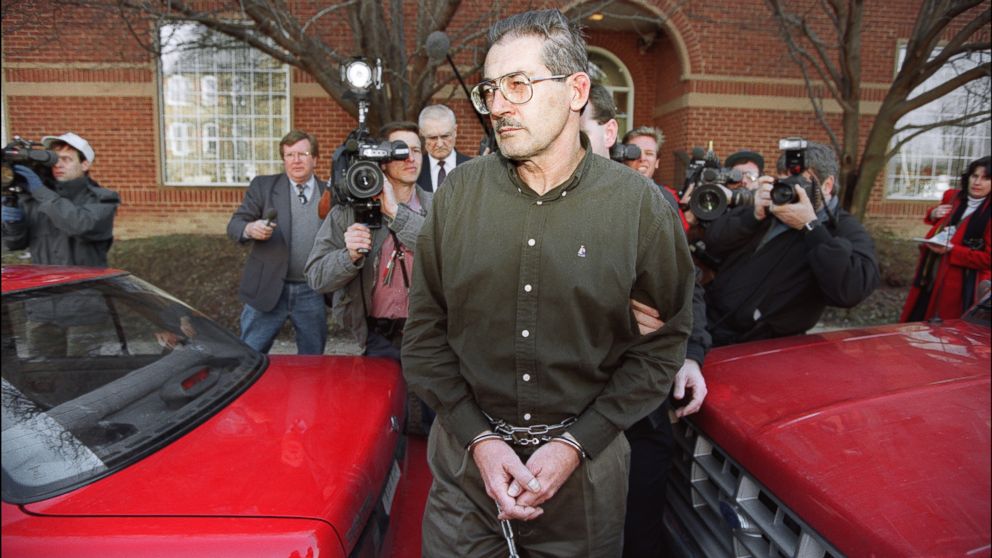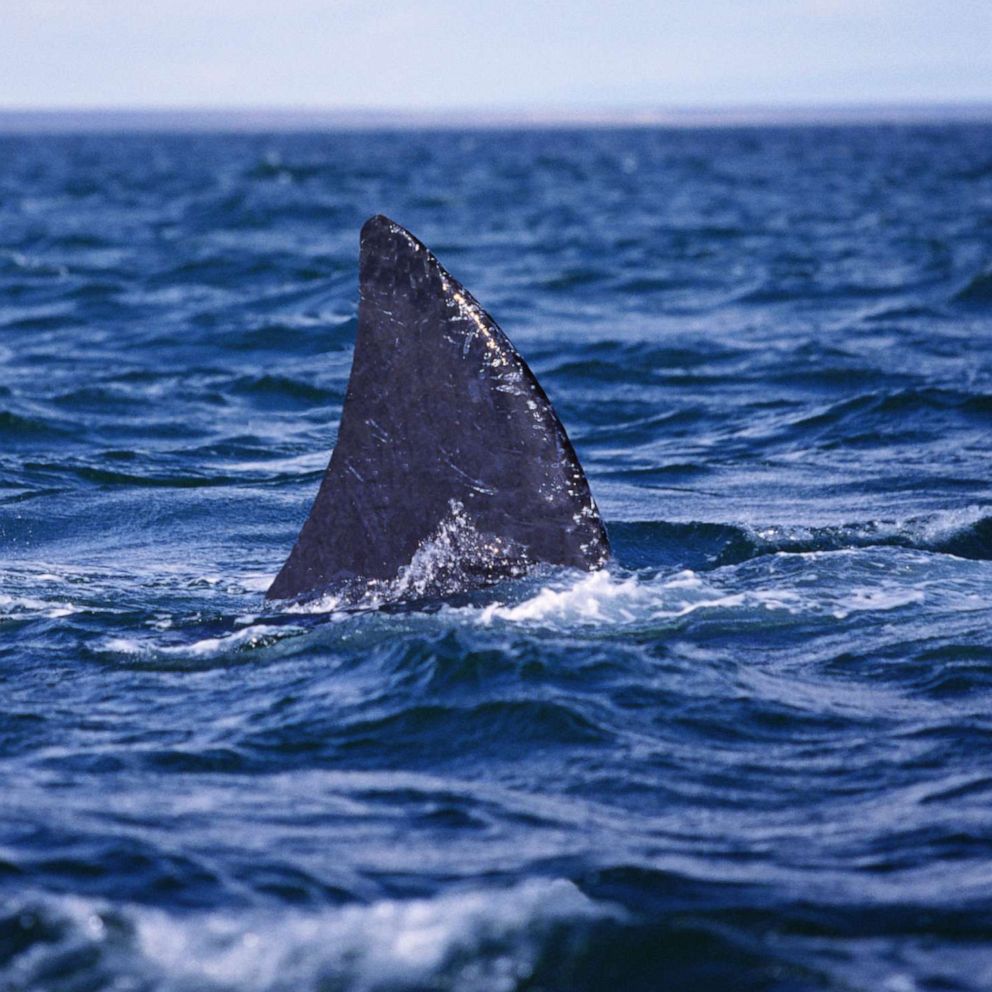'The Assets': Key Players in the Takedown of a CIA Officer Turned Soviet Spy
Sandy Grimes was part of a team that exposed a CIA officer turned Soviet spy.

Dec. 31, 2013— -- intro: In the throes of the Cold War, as the United States and the Soviet Union dared the other to blink first, the Central Intelligence Agency was quietly fighting a battle of its own from within.
Sandy Grimes and Jeanne Vertefeuille were part of a five-person CIA team who were tasked with hunting down moles inside the agency and were responsible for the ultimate takedown of CIA traitor Aldrich "Rick" Ames, pictured above.
Ames was convicted of espionage in 1994.
Grimes and Vertefeuille wrote a memoir called, "Circle of Treason: A CIA Account of Traitor Aldrich Ames and The Men He Betrayed," which details their work on the case and their experiences at the CIA. The ABC eight-part miniseries, "The Assets," produced by Lincoln Square Productions, was inspired by their memoir.
Get to know the real-life key players in the Ames case, as laid out in the Grimes and Vertefeuille book, and watch "The Assets," which premieres on Jan. 2 at 10 p.m. ET and airs Thursdays on ABC.
quicklist: title: Aldrich 'Rick' Amesmedia: 21317760text: Rick Ames was a CIA counterintelligence officer who became a Soviet spy during the Cold War.
In the mid-70s, he was assigned to collect information from two Soviet government sources that provided a wealth of intelligence about Soviet foreign policy for the CIA.
Ames was in a leadership role at the CIA by the 1980s, but his personal life was suffering. A heavy drinker, Ames had several affairs. He divorced his wife and was preparing to marry his mistress, Rosario Casas Dupuy, but Ames ran into financial trouble and decided to ask the Soviets for money in exchange for information.
In 1985, Ames approached the Soviets and offered to provide information about CIA operations on Soviet targets for $50,000.
Over time, Ames gave the KGB an enormous collection of documents that provided information about major cases the CIA and FBI were working on against the Soviets, including a list of Soviet double agents, in exchange for hundreds of thousands of dollars. It is believed that Ames' list led to the arrest or execution of as many as 10 CIA Soviet assets.
By 1989, Ames had earned enough money from his activities that he was able to pay cash for a new Jaguar and a $540,000 home. Even though this information was reported to the CIA "mole hunt" team by a colleague, the investigation into Ames was just beginning.
By August 1991, a joint CIA-FBI unit was narrowing down a list of CIA employees who had access to the 1985 compromises of the CIA Soviet assets, which included Ames. They began focusing on him when questions about his wealth couldn't be explained.
On Feb. 21, 1994, Ames was arrested in Arlington, Va. He was convicted of espionage and sentenced to life in prison.
quicklist: title: Sandy Grimesmedia: 21317810text: Sandy Grimes was a CIA officer who helped bring down Rick Ames, one of the most notorious moles in the history of the agency.
Recruited to the CIA from college, Grimes was assigned to study the Soviet security agency KGB. She worked directly with CIA Soviet assets, including GRU General Dmitriy Polyakov, who had become one of the most helpful double agents for the CIA during the Cold War.
In the late 1970s, Grimes began working for Jeanne Vertefeuille, a well-respected CIA officer. When the counterintelligence group formed the Soviet-East European Division, Vertefeuille became the chief and Grimes headed the Soviet section.
In 1986, Grimes learned about the full extent of the CIA Soviet asset losses and was brought into another operation involving an anonymous write-in to a CIA officer in Bonn, Germany. The person, dubbed "Mister X," said the CIA's Soviet sources have been compromised "due to a penetration of CIA communication." The following year, Grimes was put in charge of the Moscow Task Force, a newly formed group that investigated KGB's access to CIA Moscow Station records.
Grimes had known Ames for years, but she didn't suspect him of spying for the Soviets until another CIA colleague raised questions about his new found wealth to both her and Vertefeuille.
Then in 1992, Grimes and another CIA officer, Dan Payne, discovered large amounts of money being deposited into Ames' checking account after his meetings with a Soviet arms control specialist. The following year, in 1993, the FBI launched a full investigation into Ames.
Ames was arrested and convicted of espionage in 1994.
quicklist: title: Jeanne Vertefeuillemedia: 21324681text: Jeanne Vertefeuille was a CIA officer who helped put one of the agency's biggest traitors behind bars.
Also recruited to the CIA from college, Vertefeuille worked her way up from secretarial work to running counterintelligence production for the agency's Soviet-East European (SE) Division. In 1986, she was tasked with finding out why a rash of Soviets working for the CIA had been compromised. Meanwhile, her colleague, Sandy Grimes, was assigned to protect new Soviet assets and the two began working together.
Grimes, Vertefeuille and their team's pursuit of potential moles working for the Soviets from inside the agency eventually led to bringing down Rick Ames, who was convicted of espionage in 1994.
Pictured above, from left to right, Sandy Grimes, Paul Redmond, Jeanne Vertefeuille, Diana Worthen and Dan Payne, all members of the CIA "mole hunt" team that worked to reveal Ames as a Soviet spy.
quicklist: title: Diana Worthentext: Diana Worthen became friends with Rick Ames and his then-mistress Rosario Casas Dupuy when they were stationed in Mexico City.
After Ames and Rosario got married and moved back to the Washington, D.C., area, Worthen became suspicious when Rosario told her they had paid cash to buy a house for its asking price of $540,000, without bargaining, and that they were remodeling the kitchen, having extensive landscaping done and had bought new cars.
Worthen brought her observations to Sandy Grimes and then Jeanne Vertefeuille, who advised her to take her information to another CIA colleague, Dan Payne.
quicklist: title: Dan Paynetext: CIA officer Dan Payne joined the mole hunt in 1988 and began interviewing officers stationed in Moscow. Later, he was asked to look for unexplained wealth in Ames' accounts.
When Diana Worthen raised her suspicions in 1989, Payne started reviewing Ames' personnel files and looking into his wife, Rosario.
In 1991, Payne asked the Office of Security to start a background investigation into Ames. The following year, Payne began charting Ames' financial records, as Sandy Grimes again reviewed Ames' personnel records.
In August 1992, they had a breakthrough in the case when Grimes discovered three correlations between Ames meeting with a Soviet diplomat, followed by large deposits of money into his bank account.
quicklist: title: Paul Redmondtext: In the 1980s, Paul Redmond was chief of the counterintelligence group in the Soviet-East European (SE) Division. After several CIA Soviet assets were compromised, Redmond, along with Sandy Grimes, was tasked in 1986 with keeping new CIA Soviet assets alive.
Redmond then became Deputy Chief of the Counterintelligence Center in 1991 and joined the "mole-hunt" team. He eventually devoted time to pulling information on Ames' finances.




